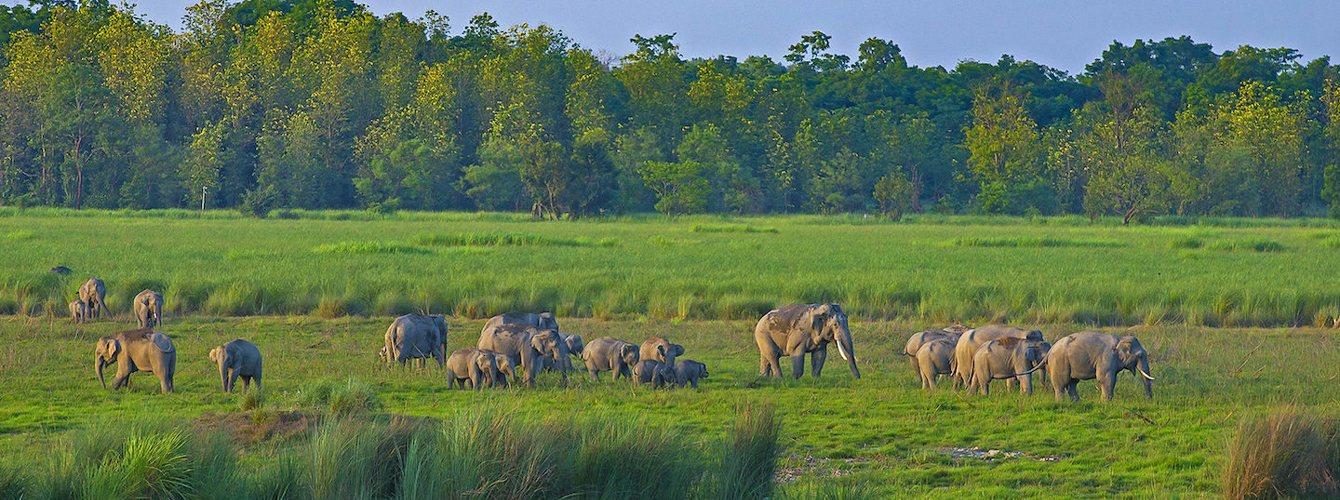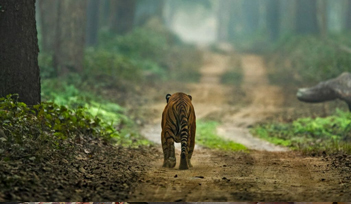Home > History of Dudhwa
History of Dudhwa National Park
Dudhwa National Park is a protected area located in the Terai region of Uttar Pradesh, India. The park covers an area of 490.3 square kilometers and is known for its diverse flora and fauna.
The history of Dudhwa National Park dates back to 1958 when the forest department of Uttar Pradesh established a small wildlife sanctuary in the region. In 1977, the sanctuary was expanded and declared a national park under the Wildlife Protection Act of 1972.
The park is home to a wide variety of wildlife species, including tigers, leopards, rhinoceros, elephants, swamp deer, and many other animals. It also has a rich avifauna with over 450 species of birds recorded, including the Bengal Florican, Great Slaty Woodpecker, and Sarus Crane.
The park has faced several challenges over the years, including poaching, encroachment, and habitat loss. In response, the government has taken several measures to protect the park, including establishing anti-poaching units, relocating villages from within the park boundaries, and implementing community-based conservation programs.
Today, Dudhwa National Park is recognized as one of the most important conservation areas in India and is a popular destination for tourists and wildlife enthusiasts. The park continues to be an important site for research and conservation efforts, and is home to several ongoing projects aimed at protecting its rich biodiversity.
History of Katarniaghat Wildlife Sanctuary
Katarniaghat Wildlife Sanctuary is a protected area located in the state of Uttar Pradesh, India. It was established in 1975 with an aim to protect the endangered species of fauna and flora in the region.
The sanctuary covers an area of about 400 square kilometers and is situated on the banks of the River Girwa. It is home to a diverse range of wildlife including tigers, leopards, elephants, Indian rhinoceros, gharials, and various species of birds and reptiles.
The sanctuary has a rich history and was once a part of the ancient kingdom of Awadh. During the British colonial period, the area was used for hunting and was known as a popular hunting ground for British officials and members of the royal family. It was only after independence that the area was declared a wildlife sanctuary to protect its unique biodiversity.
Since its establishment, the sanctuary has been a major attraction for tourists and nature enthusiasts. It is also an important center for scientific research and conservation activities. The Uttar Pradesh Forest Department is responsible for the management of the sanctuary and has implemented various measures to ensure the conservation of its flora and fauna.
Today, Katarniaghat Wildlife Sanctuary is recognized as one of the most important wildlife sanctuaries in India and attracts visitors from all over the world. Its diverse ecosystem and rich history make it a must-visit destination for anyone interested in nature and wildlife conservation.
History of Kishanpur Wildlife Sanctuary
Kishanpur Wildlife Sanctuary is located in the district of Lakhimpur Kheri in the state of Uttar Pradesh, India. The sanctuary was established in 1972 and covers an area of 227 square kilometers. The sanctuary is home to a variety of flora and fauna, including tigers, leopards, sloth bears, sambar deer, chital, swamp deer, and more than 300 species of birds.
The history of Kishanpur Wildlife Sanctuary can be traced back to the early 20th century when it was a hunting ground for the British. After India gained independence, the area was declared a reserve forest and later, in 1972, it was declared a wildlife sanctuary under the Wildlife Protection Act.
Since its establishment, Kishanpur Wildlife Sanctuary has been a popular destination for nature lovers and wildlife enthusiasts. The sanctuary is managed by the Forest Department of Uttar Pradesh, and various measures have been taken to protect and conserve the flora and fauna of the sanctuary.
In recent years, the sanctuary has faced several challenges, including poaching and encroachment. However, the forest department has taken strict measures to combat these issues and has successfully managed to maintain the ecological balance of the sanctuary.
Today, Kishanpur Wildlife Sanctuary is recognized as one of the most important wildlife reserves in India and attracts a large number of tourists from all over the world. It is not only a popular tourist destination but also an important center for wildlife research and conservation.








